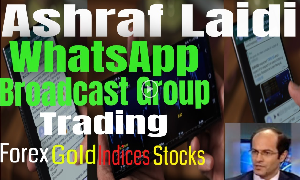Bond Spreads' Golden Cross & the Fed Obstacle
Not all obstacles to a Fed hike are located outside of the US. The escalation in high yield corporate bond spreads to three-year highs resulting from plunging energy prices has worsened the debt profile of several oil & gas companies, to the extent that oil prices have become more instrumental fueling bond spreads than interest rates. With treasury yields on the rise and high yield spreads following closely behind, even a modest Fed hike would have a not-so modest impact on the sustainability of debt financing in oil and gas as well as the suppliers dependent upon on them (like Caterpillar).

15 of the 17 US firms listed in Bloomberg's debt profiling for exploration & production with market capitalisation above $5bn have seen their credit profile deteriorate and risk of default rise over the past 2 years. In the case of oil & gas Services equipment, six of the 7 companies have sustained deterioration. These companies are Antero, Apache, ConocoPhillips, EQT, Halliburton, Helmerich and Marathon Oil.
Six US energy companies have already filed for bankruptcy this year. According to Fitch Ratings, the default rate among US energy firms short up to 4.8%, the highest since 1999. Defaults in exploration and production sector companies hit a rate of 8.5% also at five-year high. Sub-investment grade US energy bonds show a yield of 11%, a little off its July 2009 high and almost double its 5.9% rate a year ago.
Corporate bond spreads measure the difference between high-yield corporate bonds (also known as junk bonds) and U.S. government bonds of similar maturities. The higher the risk faced by a bond issuer, the higher interest rate demanded by holders of the bond. With US govt debt considered to be the least risky from the perspective of credit risk (chances of default), yields on treasuries are relatively lower than those on corporate bonds, especially as companies face credit, business and inflation risk.
VIX & High-Yield Spreads Hand-in-Hand
The 2nd chart highlights the positive correlation between corporate bond spreads and the VIX index. The relation is so close to the extent, that both of the VIX and the high-yield spread index have formed a rare Golden Cross pattern, whereby their 55-week moving average exceeds the 100-week moving average for the first time since August 2007.Rising VIX coincides with the ascent in bond spreads as equity investors and speculators grow risk averse and the economy slows, while credit and business risk weigh on the solvency of highly leveraged companies.
Just as a rising VIX tends to reflect increased volatility (fear) in the general market, increasing bond spreads are indicative of emerging worries with corporate finances, which is more likely to be the case during market uncertainty and/or economic slowdown. Falling or low bond spreads usually prevail during periods of healthier economic growth, falling risk, and increased bond market liquidity. Similar to a low VIX, excessively low bond spreads can be a sign of investor complacency and a disregard of the risks associated with high-yield bonds.
The rate of deterioration in the debt profile of energy and mining companies is far from that reached by sub-prime lenders in 2007-2009. But the situation is getting worse. A Fed hike would be a costly and embarrassing policy mistake.
The VIX-Bond Spread relationship was discussed in detail in chapter five of my book.
| Act | Exp | Prev | GMT |
|---|---|---|---|
| Fed's William Dudley speech | |||
| Sep 28 12:30 | |||
| Fed's Evans Speech | |||
| Sep 28 17:30 | |||
| FOMC's Williams speech | |||
| Sep 28 21:00 | |||
Latest IMTs
-
Gold During Recessions & Bear Markets
by Ashraf Laidi | Dec 13, 2025 12:29
-
AAOI & the Fed
by Ashraf Laidi | Dec 11, 2025 19:22
-
3 Qstns for Today's Fed Meeting
by Ashraf Laidi | Dec 10, 2025 15:40
-
5 Stocks Worked for me Best in 2025
by Ashraf Laidi | Dec 5, 2025 14:42
-
Silver 150 Highly Plausible
by Ashraf Laidi | Dec 4, 2025 11:19







